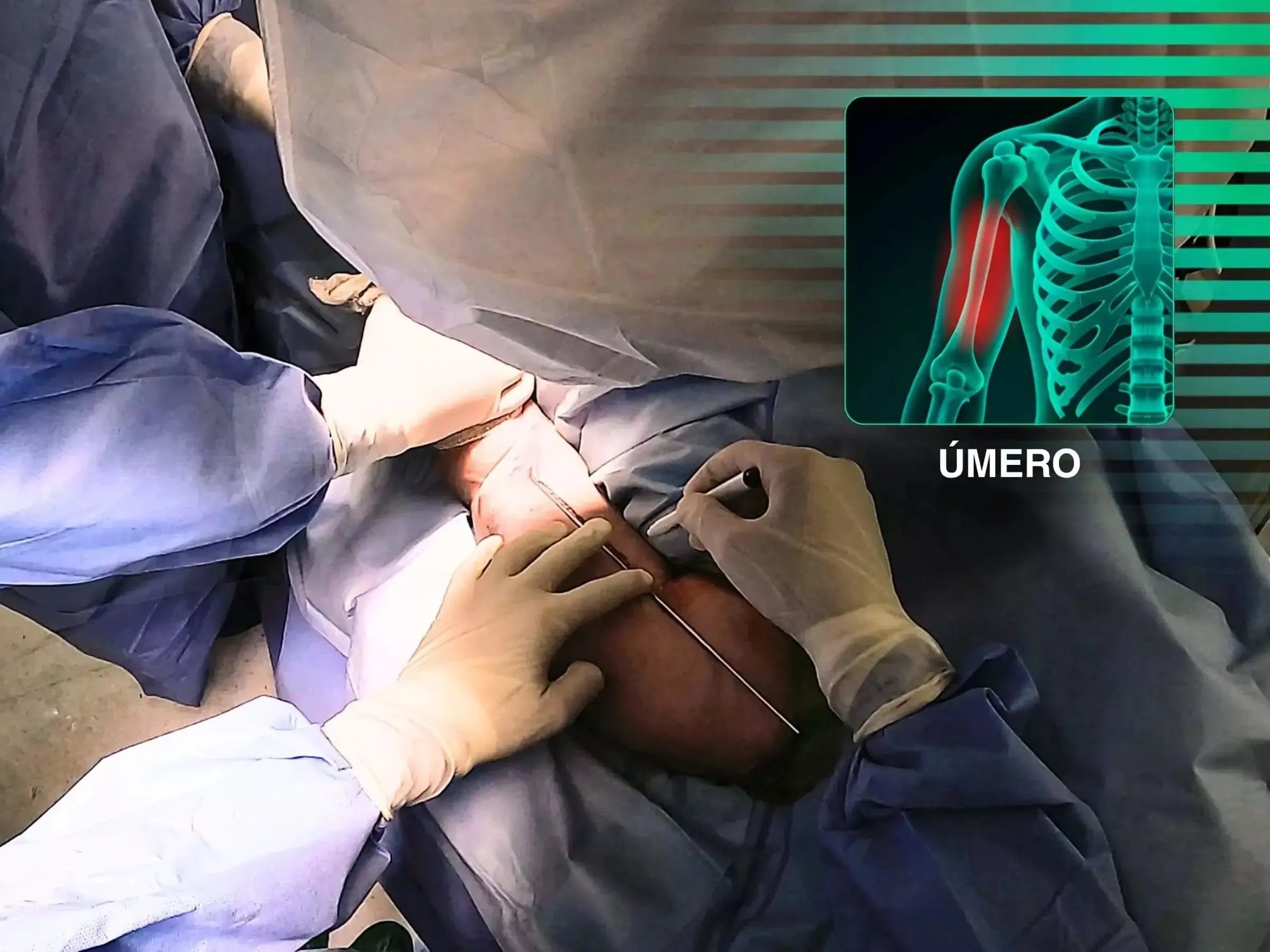
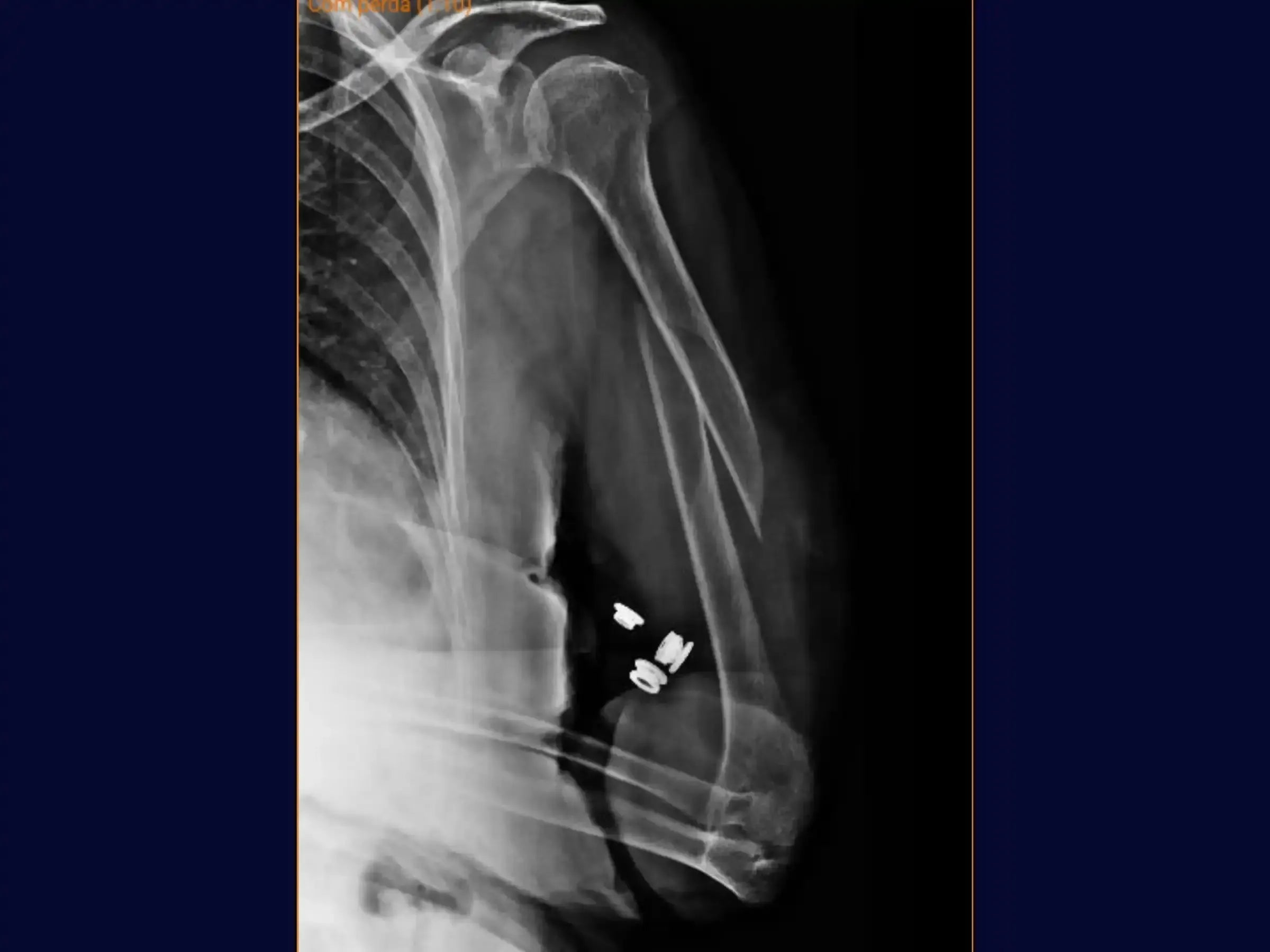
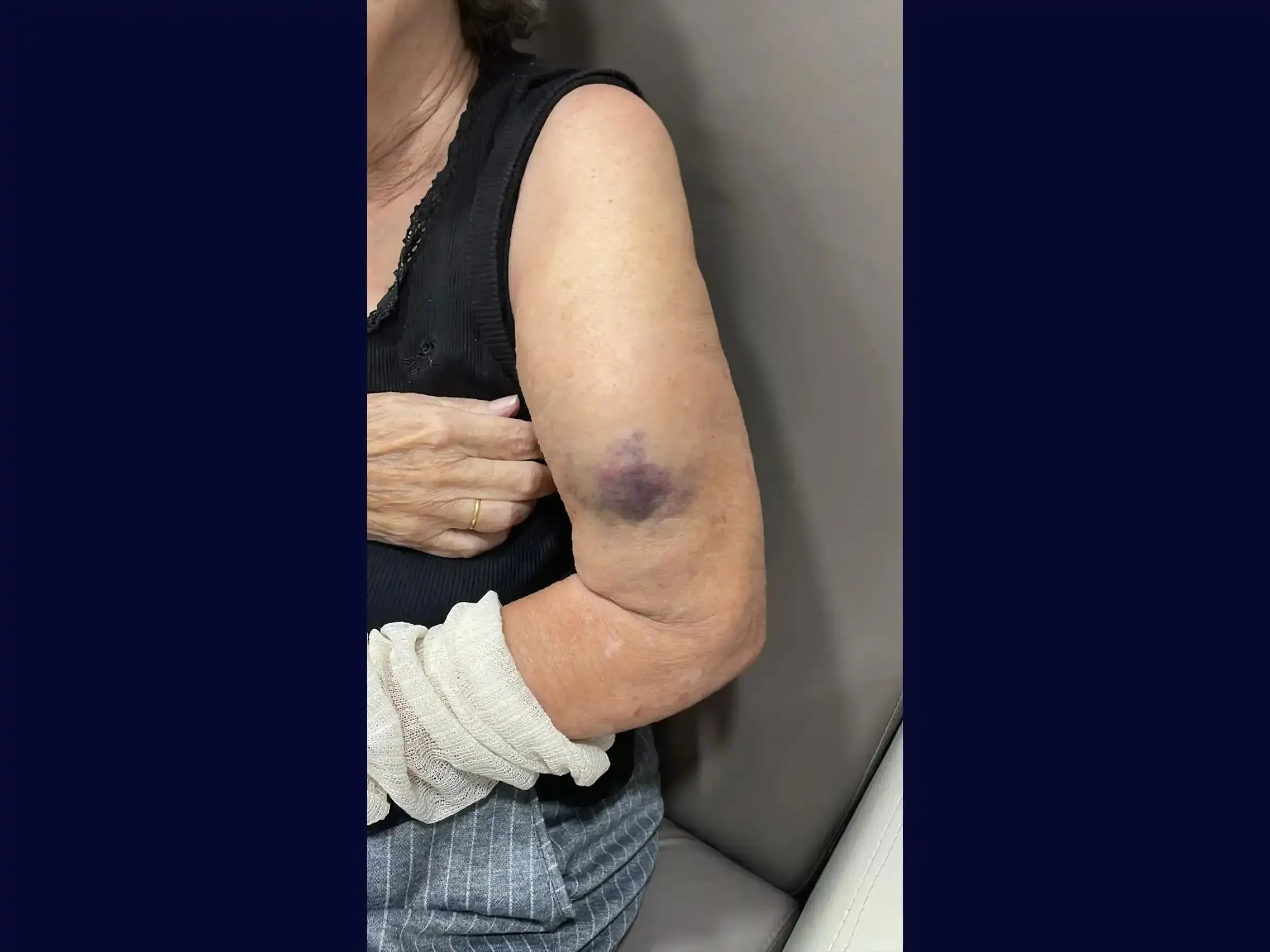
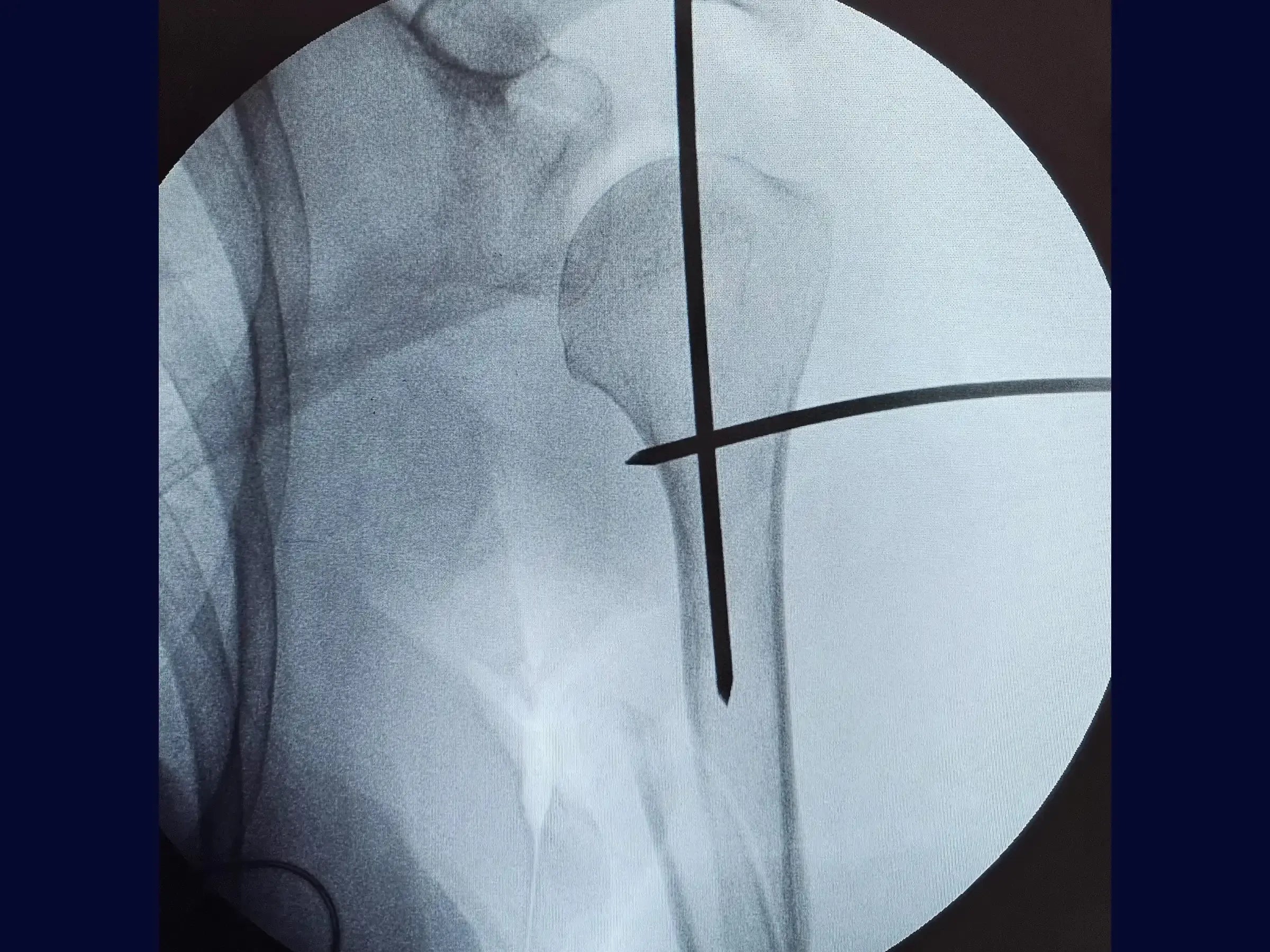
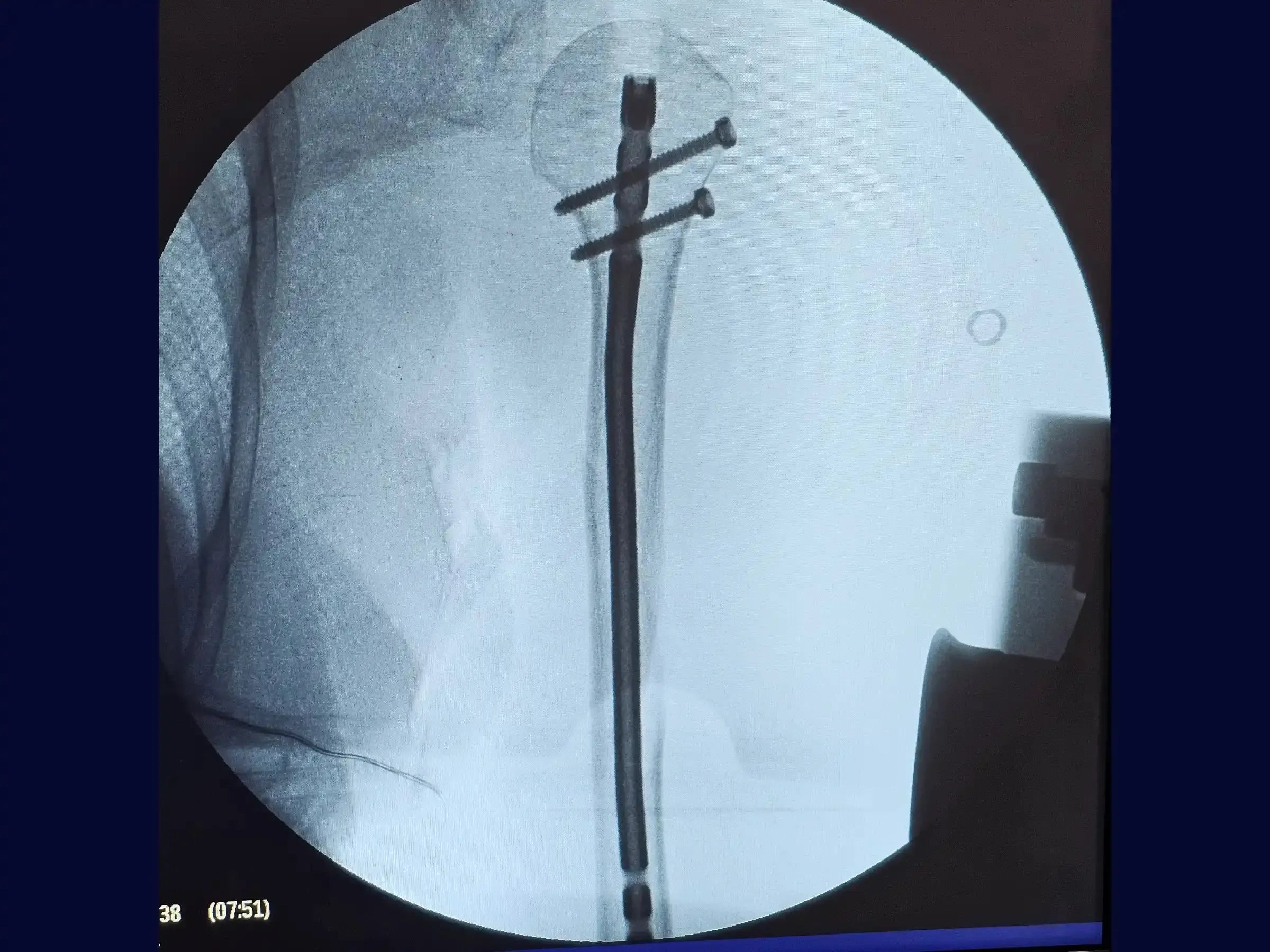
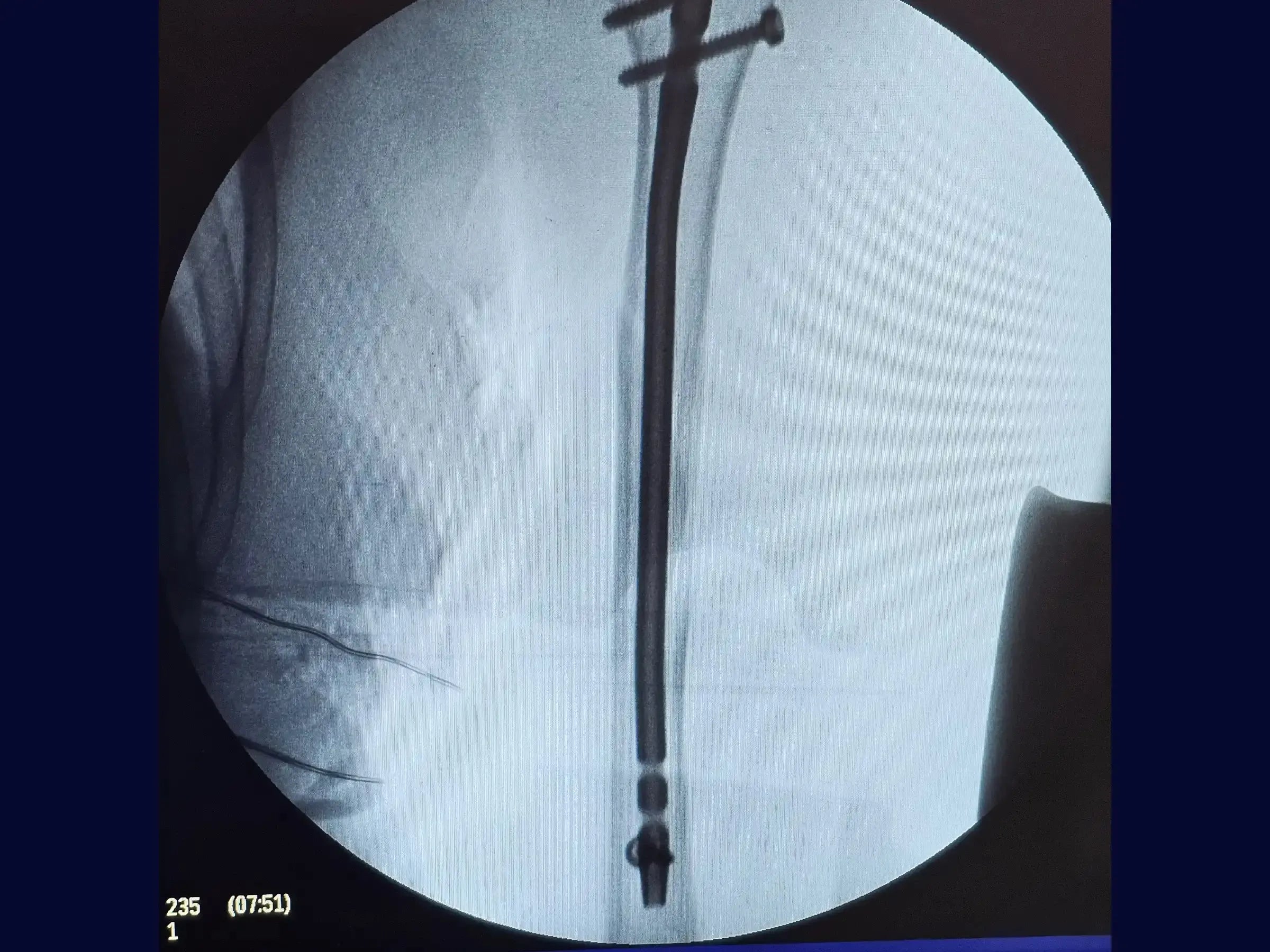
Diaphyseal Humerus Fracture - Treatment with Intramedullary Nail
Enhance the technique with intramedullary rod in 4K surgical view.

Dr. Savio Chami
Médico Ortopedista
Disponível em::





Videos em 4k
Dublagem Profissional
Escolher opções






Diaphyseal Humerus Fracture - Treatment with Intramedullary Nail
Preço promocionalR$ 0,00

Dr. Savio Chami
Médico Ortopedista
Questions & Answers loading...
Descrição
Master the treatment of diaphyseal humeral fractures. This training offers a technical immersion in osteosynthesis with intramedullary nails, covering everything from planning to advanced reduction and locking maneuvers, to optimize your surgical outcomes.
Training Focus:
- Treatment of diaphyseal humeral fractures.
- Intramedullary nail fixation technique.
- Use of Kirschner wire as a "joystick" for manipulation of the proximal fragment.
- Precise measurement of the nail and considerations regarding the tapering of the medullary canal.
- Performing proximal and distal locks, focusing on the high difficulty of the distal lock.
Detailed Content:
- Initial Assessment and Marking: Learn to delineate the long axis of the humerus and identify the deformity and exact location of the fracture, using a dermographic pen for precise surgical planning.
- Creation of Aligned Access Portal: Master the technique of creating an access portal aligned with the diaphysis and the rotator cuff, with special attention to incisions along the direction of the fibers to avoid injuries and the need for future repair.
- Manipulation of the Proximal Fragment with Kirschner Wire ("Joystick"): Understand how to use a 3.0mm or 2.0mm Kirschner wire as a "joystick" to assist in the adduction and correction of the rotation of the upper fragment, exposing the entry point and facilitating a precise entry angle at the transition between the greater tuberosity and the humeral head.
- Optimized Entry Point: Learn how to direct the introduction of the guide wire predominantly at the humeral head, avoiding the tubercle-head transition to prevent fractures of the greater tuberosity during the widening of the entry point.
- Accurate Radiographic Assessment of the Entry Point: Learn how to perform the radiographic assessment of the entry point directly with the "joystick" in anteroposterior and lateral views, ensuring precise visualization of the free proximal fragment.
- Measurement and Insertion of the Intramedullary Rod: Develop the skill to measure the intramedullary rod accurately, considering the triangular tapering of the medullary canal to avoid protrusions and optimize the fit of the implant.
- Proximal Blocking Techniques: Master the creation of proximal blocks, using oblique screws directed to the humeral calcar to ensure the fixation of the stem.
- High Difficulty Distal Blocking: Delve into the freehand distal blocking technique, a challenging procedure due to the triangular anatomy of the distal humerus. Understand the importance of using a sharp-tipped drill to avoid slippage and ensure the precision of the one-centimeter incision.
- Closure and Post-operative Results: Understand the importance of suturing the rotator cuff (since the incision is in the direction of the fibers) to prevent shoulder function issues in the post-operative period, and the subcutaneous and skin closure that allows for early mobility.
Included Material:
- Complete Technical PDF: Educational document detailing all stages of the surgical technique for the treatment of diaphyseal humeral fractures with intramedullary nail.
Enhance your skills in humeral surgery. Enroll now and master advanced techniques for the treatment of diaphyseal fractures with intramedullary nail, ensuring optimized surgical outcomes for your patients.

